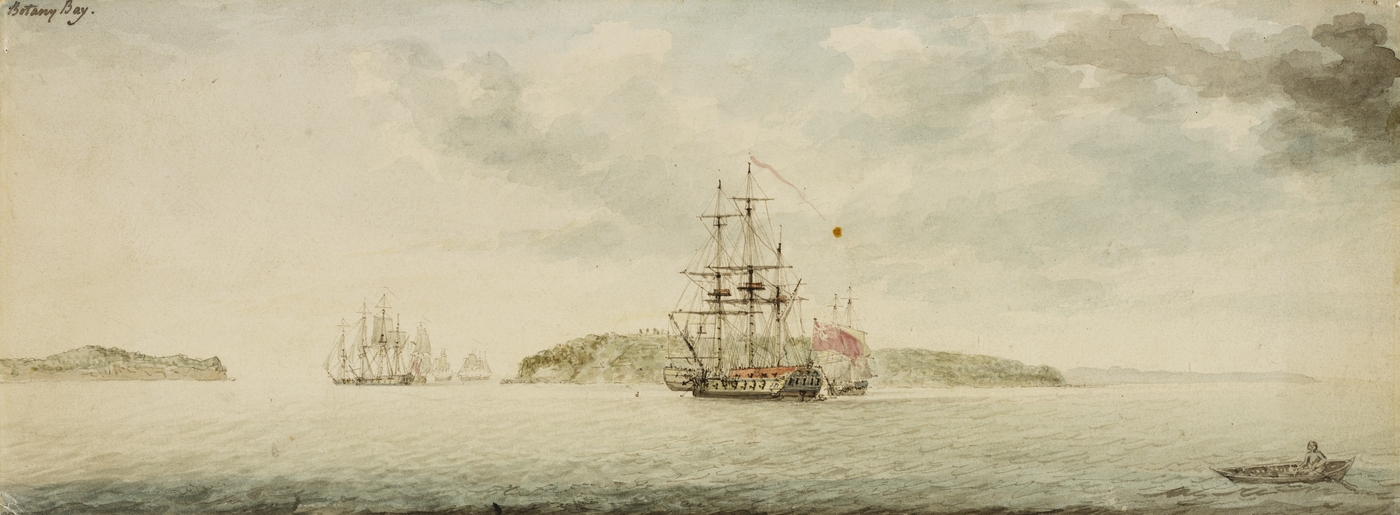
Who was Mary Bryant?
Thanks to popular literature many of us are familiar with the often heavily fictionalised accounts of the lives of the daring highwayman such as Dick Turpin. However, far fewer of us know about the lives of some the extraordinary highwaywomen of the 18th and 19th century. One such woman was Mary Bryant, a convicted robber, rather than a ‘highwaywoman’ in the traditional sense. Nevertheless, her life story is arguably more fascinating than that of even the most flamboyant highwayman. Mary was one of the earliest escapees, and first woman, to escape from the 18th-century penal colonies of Australia.
Early Life
It is recorded that Mary Broad (or Braund) was baptised on 1 May 1765 in Fowey, Cornwall, England, though her birth date remains unknown. She was the daughter of fisherman and mariner, William Broad and his wife Grace. Little else is known of her life up until the age of 20, other than she had an older sister and a younger brother. It was around aged 20 that she left home to seek work in Plymouth.
In January 1786, Mary, along with two female accomplices, was involved in a robbery and violent assault. The attack took place on a road just outside Plymouth on victim Agnes Lakeman. The theft was of a silk bonnet and a few other trivial items, which had a value of less than £2. On 20 March 1786, at the Exeter Assizes, all three accused were sentenced to hang. This was commuted to seven years transportation the following month.
Transportation and Prison
On 13 May 1787, Mary set sail from Portsmouth as a prisoner of the First Fleet aboard the ‘Charlotte’. The fleet’s medical records stated that on 8 September 1787: “Mary Broad, a convict, was delivered of a fine girl.” In October, when the ship reached Cape Town, the baby was christened Charlotte Spence by the ship’s minister. The baby’s father was recorded as ‘unknown’. In early 1788, soon after arriving in Australia, she went on to marry William Bryant. He was convicted Cornish smuggler who had also been onboard the Charlotte.

Arthur Phillip – Governor of Botany Bay Image Credit: Wikimedia Commons
Bryant had spent his life as a fisherman, so found himself first choice to skipper the Botany Bay’s small fishing fleet. However, he was soon caught pilfering a small amount of the catch to sell on the side. He received a hundred lashes for his troubles. According to the penal colony rules, he and Mary were also forced to live apart. However, the colony governor, Arthur Phillip, recognised that William’s skills were too valuable to loose. Thus, he soon allowed Bryant to return to his former role. By this time, the Bryant’s were already hatching a plan to escape Australia. On 6 May 1790, Mary gave birth to her second child, Emanuel.
Escaping Australia
On 28 March 1791, William and Mary Bryant, their children, and seven fellow prisoners, stole Arthur Phillip’s six-oared cutter. They also took with them equipment and supplies they had amassed over the previous months. After a epic voyage of 5,000 km that took 66 days, the intrepid party arrived in Kupang, West Timor. The voyage was similar to that of Captain Bligh, completed only 2 years earlier. Bligh and his men had been set adrift in an open boat following the notorious mutiny on the Bounty.
The Bryant’s trip involved navigating the then uncharted Great Barrier Reef and the Torres Straits. Mary had shared the navigation with William, having been taught the valuable sailing skills by her father. William noted in his diary during the journey that his wife and children “bore their suffering with more fortitude than any among them.”
West Timor was under the control of the Dutch, to whom the Bryant’s and their crew claimed to be shipwreck survivors. Unfortunately, fate was not to be on their side. HMS Pandora, skippered by Captain Edward Edwards had been sent to the area in search of the Bounty mutineers. However, Edwards had managed to smash up the Pandora on the Great Barrier Reef. He and his fellow eighty-nine crewmen made their way to Kupang by various methods. Their intention being to pick up a ship somewhere in the East Indies for the voyage back to England. When Edwards came ashore in Kupang he was greeted with the news that some of his crew had already arrived.
Recapture and return to England
Within days, the Bryant party were arrested by the Dutch and subsequently turned over to Edwards. He hired the Dutch ship Rembang to transport his prisoners to Batavia (modern-day Jakarta). From there it was intended to find a ship to transport them back to England. On October 5, the Rembang set sail for Batavia with all captives been held below deck. The ship encountered a cyclone on the voyage meaning most of those onboard spend almost the entire trip in saturated conditions. By the time the prisoners arrived in Batavia, most were ill with fever and were transferred to a hospital. On 1 December 1791, Emmanuel died in his mother’s arm. William Bryant died three weeks later. On 6 May 1792, Charlotte died on the last leg of the voyage back to England.
On 18 June 1792, Mary Bryant and four of the other seven escapees arrived back in England. The punishment for escaping from transportation was normally an automatic death sentence. However, when they were brought before the Old Bailey on 7 July, they were all detained in custody until a further trial could be arranged. Their case was taken up by famed author and lawyer, James Boswell. He offered to help save Mary from execution, but Mary said that she had no desire to spend the rest of her life in prison. When Mary’s story made the press, it won her a great deal of public sympathy. Boswell capitalised on the mood and against the odds managed to secure a full pardon for Mary. On 2 May 1793, Mary Bryant was released from Newgate prison, with her four cohorts securing freedom around 6 months later.
Joy and Sadness
Boswell set up Mary in accommodation in Little Titchfield Street, Westminster and gave her an allowance. She learned that her sister Dolly was working close by as a cook and they soon arranged to meet up. Soon after, Mary is then believed to have returned to her family home in Cornwall. Boswell provided her with a biannual annuity, with written records showing Mary acknowledgement the receipt of the first three payments with gratitude. When Boswell died in May 1795 it is claimed that his family may have put an end to Mary’s payments. However, what actually happened to Mary once she returned to Cornwall seems to remain in some doubt. Some think that she may have died as early as late 1794 when she was aged only 29 years old. However, the date and cause of her death have never been substantiated.
The Legend of Mary Bryant
The Bryant party’s escape from Botany Bay was the subject of a ten-episode serial, broadcast by the Australian Broadcasting Commission in 1963. The Mary Bryant story also featured in a 1989 play by Patrick Edgeworth, Boswell for the Defence, which had great success in London. ‘The Incredible Journey of Mary Bryant’ was a 2005 British/Australian television movie loosely based on Bryant’s life. It starred British actress Romola Garai in the main role. The somewhat romanticised film was first screened in the UK in 2006.
Here’s a short extract from the film:
In 2007, musical titled Mary Bryant was written by Nick Enright and was presented in Melbourne. In 2011, Mary Bryant was the subject of a one-woman theatre show ”Oh Mary!”, which toured the UK. Some twelve best-selling books featuring Mary in a biographical or historical novel context have also been published since 2000.
Header image credit: ‘Botany Bay’, a watercolour by Charles Gore – Wikimedia Commons
If you’ve enjoyed reading this article, you can find other features on notorious highwaymen by clicking on https://www.fiveminutesspare.com/education/category/people/highwaymen/





